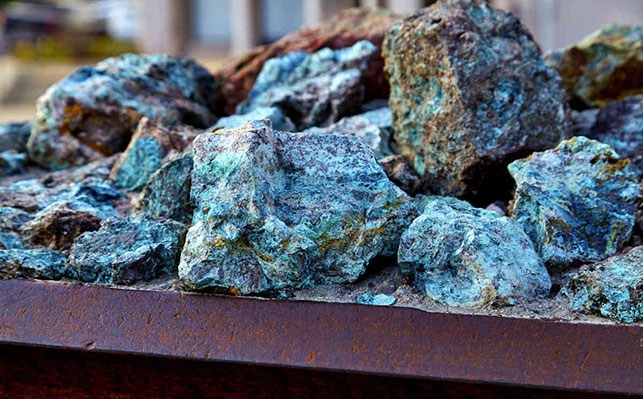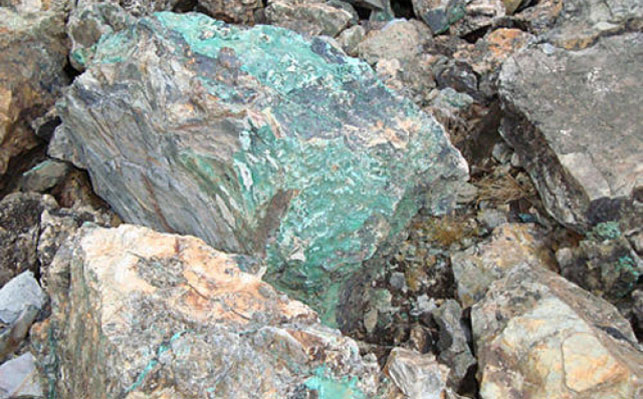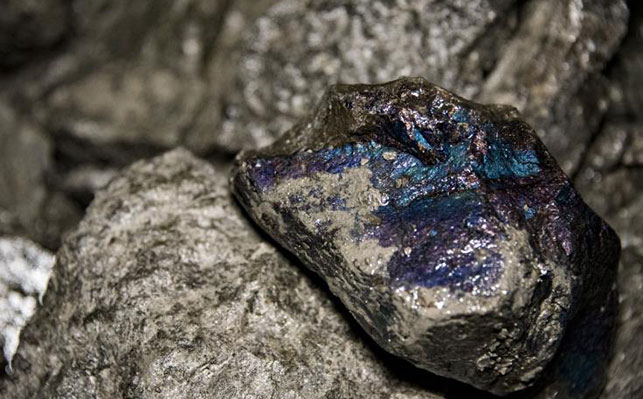
15311826613
Click to add WeChatCobalt (Co) is a silver-white metal known for its high melting point, strong magnetic properties, and excellent corrosion resistance. It is an indispensable key strategic resource in modern industry. Cobalt ore refers to natural mineral aggregates containing cobalt, usually found in compound forms such as sulfides, oxides, arsenides, or silicates. The formation of cobalt ores is closely related to geological activities, commonly found in magmatic processes, hydrothermal activities, or sedimentary environments.

Cobalt has widespread applications across various industries:
New Energy Sector: Cobalt is a core component of lithium-ion battery cathode materials (e.g., lithium cobalt oxide, ternary materials), supporting the development of electric vehicles and energy storage technologies.
Aerospace Industry: Cobalt-based superalloys are used to manufacture jet engine blades and turbine components, capable of withstanding extreme temperatures and pressures.
Additionally, cobalt is utilized in manufacturing hard alloys, magnetic materials, catalysts, and pigments. Due to its irreplaceability, global demand for cobalt continues to grow, making cobalt ore exploration and development a focal point in the global mining sector.
Cobalt rarely occurs as a pure element in nature and is typically combined with other metals like iron, nickel, copper, or arsenic to form minerals. Based on mineral composition and genesis, cobalt ores can be categorized into several main types:
These are the most common cobalt ore types, primarily forming in hydrothermal deposits or magmatic sulfide deposits. Cobalt in these ores often combines with sulfur, iron, and nickel to form sulfide minerals. They are mostly found in hydrothermal vein deposits or layered intrusions, featuring large-scale deposits with high grades, serving as the primary industrial source of cobalt.

Pyrite (FeS₂): Often contains small amounts of cobalt, forming cobaltian pyrite.
Cobaltite (CoAsS): An important cobalt sulfide mineral, often associated with arsenopyrite and galena.
Pentlandite ((Fe,Ni)₉S₈): Commonly contains cobalt, acting as the primary carrier of cobalt in nickel sulfide ores.
These ores mainly form in weathering crusts or oxidation zones, resulting from secondary minerals formed through oxidation and leaching of primary sulfide deposits. They are predominantly found in tropical or subtropical regions' weathering crusts, appearing in layered or lenticular formations with high grades but smaller scales.
Asbolane: A cobalt-manganese oxide or hydroxide with complex chemical formulas, often found in earthy or nodular forms.
Cobaltocalcite (CoCO₃): A secondary mineral commonly found in oxidation zones.
Chloanthite (CoAs₂): Can convert to oxides under oxidizing conditions.
In these ores, cobalt combines with arsenic to form arsenic-containing minerals, commonly found in hydrothermal deposits or contact metasomatic deposits. Arsenide-type cobalt ores are often associated with gold, silver, and copper, featuring smaller but higher-grade deposits. Special attention must be paid to arsenic toxicity during processing, requiring roasting or hydrometallurgical methods to remove arsenic.
Arsenopyrite (FeAsS): Often contains cobalt, forming cobaltian arsenopyrite.
Safflorite (CoAs₂): An important cobalt arsenide mineral.
In these ores, cobalt exists in solid solution within silicate minerals, commonly found in ultrabasic rocks or metamorphic rocks. This type of cobalt ore has lower grades and more complex cobalt occurrence states, making beneficiation challenging. They are usually recovered as by-products.
Olivine ((Mg,Fe)₂SiO₄): Fayalite may contain small amounts of cobalt.
Serpentine (Mg₃Si₂O₅(OH)₄): Can adsorb cobalt during hydrothermal alteration.
Besides the above types, cobalt can combine with other elements to form various minerals, including:
Carbonate-Type Cobalt Ores: Such as erythrite (Co₃(AsO₄)₂·8H₂O), commonly found in oxidation zones.
Sulfate-Type Cobalt Ores: Such as cobalt alum (CoAl₂(SO₄)₄·22H₂O), forming in oxidized environments from cobalt sulfides.
Antimonide-Type Cobalt Ores: Such as cobaltite (CoSb₃), rarely found in hydrothermal deposits.

The beneficiation process for cobalt ores depends on the ore type, mineral composition, and dissemination characteristics. Generally, sulfide-type cobalt ores use flotation methods for enrichment, while oxide-type cobalt ores require hydrometallurgical processes (such as leaching and extraction) to extract cobalt.
Crushing and Grinding: Crush and finely grind the ore to appropriate particle sizes, ensuring separation of cobalt minerals from gangue.
Flotation Separation: For sulfide-type cobalt ores, use collectors (such as xanthates, black reagents) to float cobalt sulfides, separating them from gangue. If cobalt is associated with nickel or copper, further separation via flotation or metallurgical processes is required.
Leaching and Purification: Oxide-type cobalt ores typically use acid leaching (such as sulfuric acid leaching) or ammonia leaching processes to dissolve cobalt into solution, followed by purification through extraction and electrowinning methods.
Comprehensive Recovery: Many cobalt ores are associated with valuable metals like copper, nickel, and gold. Beneficiation processes need to design integrated flows to achieve multi-metal recovery, improving resource utilization efficiency.
Cobalt, referred to as the "vitamin" of modern industry, has diverse resource types and complex origins. Different types of cobalt ores possess unique mineralogical characteristics and beneficiation processes. Rational development and utilization of cobalt resources are crucial for ensuring the stability of the global supply chain. Future innovations in beneficiation technology and green metallurgical processes will further promote advancements in new energy and advanced manufacturing sectors.